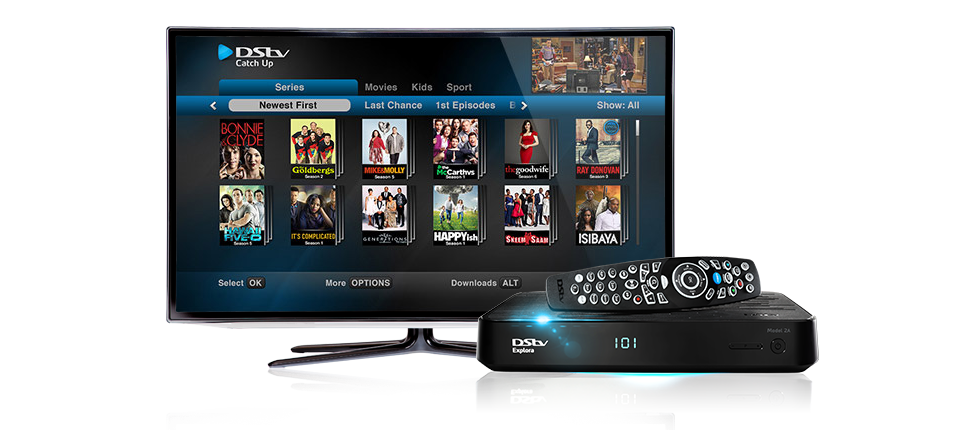You heard the news, Multichoice Zimbabwe will be closing its Joina City customer care centre on the 21st of March 2022.
The notice:
MultiChoice Zimbabwe will be closing its Harare city centre office in Joina City on the 21st of March 2022.
The customer care centre in Avondale will continue to provide a full range of services.
In addition, there are a number of accredited DStv agents in the Harare central business district and these provide the services that until now have been offered at the MultiChoice office.
Multichoice notice
There weren’t that many customer care centres in the country to begin with. The closure of the Joina City branch will leave Harare with just one, the Avondale one. The other two are in Bulawayo and Mutare.
Harare has to be the biggest market for DStv in Zimbabwe. That Multichoice would close the city centre branch raises questions. Why close the most convenient branch for most Harare residents?
We asked DStv for the reason why the Joina City branch was closed and they told us, “kindly be advised that you will be advised to why the branch is closing.” While we wait for the official reason, let’s discuss what could be going on here.
The branch was no longer necessary
DStv customers have a few main queries when trying to manage their accounts; finding out how much they owe i.e. how much to pay, making payment, clearing errors and changing packages.
It is clear that not all customers have to visit a branch to resolve these issues. The fact that DStv has thousands of customers in the country and yet is cutting down branches from 4 to 3 says it all.
Accredited agents
Like Multichoice mentioned in the notice, there is now a significant number of accredited DStv agents in the country. These agents have taken over some of the duties that staff at the customer care centres had.
Other channels to get service
DStv customers can get help via the web, phone calls, WhatsApp, email, twitter, Facebook and even an app. If a customer does not have airtime or data, there is a trusty USSD platform (*33788#) that they can use to get the same help.
The pandemic probably helped kill off branches faster
In 2020, Multichoice had to close customer care centres for close to two months. That forced closure helped them improve their capacity to handle customer queries outside the physical branch.
When they reopened their physical branches, their publicity and public relations manager remarked that they were pleased with operational capacity during the stricter lockdown period. I would imagine that they saw the cost savings they could get by shutting down some branches permanently and so worked to improve those other channels we mentioned above.
Joina City rentals
Looking at it from the outside, it feels like if one Harare branch had to be closed, it should have been the Avondale one. The Joina City branch is smack dab in the centre of the city centre. Each Harare customer would only need to hop into one Zupco to get there.
However, if one branch is being cut to save money, I would imagine Joina City has higher rentals and yet with less parking space available. Moving the head office from Avondale would not make sense.
Banks have gone through the same process
Zimbabwean banks have been closing bank branches as well. After investing in these other cutomer care channels, the physical branch quickly fell out of favour. Banks, just like DStv can now interact with customers on social media and also have free-to-use USSD platforms. However, most banks have also gone further and zero rated their apps and websites, something Multichoice is yet to do.
Could loss of customers have something to do with this?
Challenging economy and power outages
It is no secret, DStv has not been growing in the last few years in Zimbabwe. In 2019, DStv lost 170,000 customers between March and September. There was some growth over the Christmas season but for the year from March 2019 to March 2020, they were still down 92,000 subscribers.
Zimbabweans drifted further into poverty as the pandemic ravaged a struggling economy. The economy reversed course and grew in 2021 but Zimstat revealed that the average Zimbabwean continued to struggle to get basic goods. For a DStv service that is considered a luxury by most in the country, it is hard to see where the growth could come from.
We should consider too that power outages discourage people from subscribing to DStv. So, challenging economic conditions and power outages significantly contributed to subscriber loss.
Competition
That is not to mention that those who can afford to pay for DStv premium are now spoilt for choice these days. With Netflix and other streaming services gaining traction in the country, DStv now has more formidable competition than ZBC TV ever was
This trend of DStv losing premium subscribers is not a Zimbabwean problem only. Across Africa, DStv is losing Premium and Compact Plus subscribers.
So, I would not be surprised if there was a drop in foot traffic caused by a shrinking subscriber base rather than by migration to other customer care platforms. This is pure speculation on my part, but I do still occasionally see long queues at these customer care centres as some Zimbabweans still demand physical interactions.
The true reason for the drop in foot traffic, if there was one, would be a combination of migration to other service channels and a drop in the subscriber base.
In the end though, unless you have a hardware problem on your decoder, you have no reason to visit a physical DStv customer care centre. The technology has improved to such an extent that the branch model’s days are numbered. There is nothing shocking about Multichoice closing the Joina branch. However, it’s interesting to find out the various factors that led to that happening.-techzim

